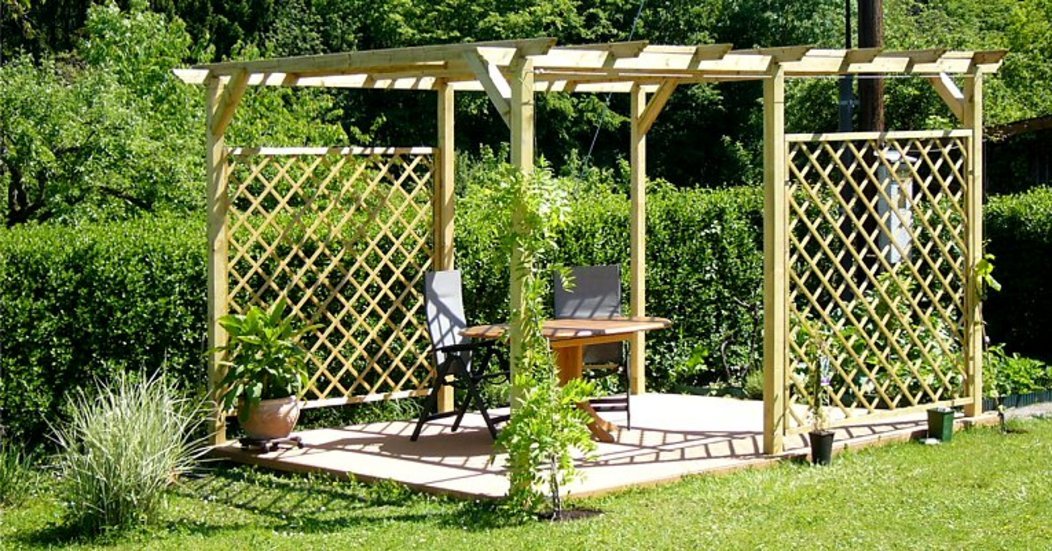Trellises Trellis: A Timeless Garden Structure for Beauty and Function
Trellises have long been cherished by gardeners and landscape designers for their ability to blend aesthetics with practicality. The term “trellises trellis“ might seem redundant, but it highlights the variety and significance of these garden structures. Whether you’re growing climbing roses, supporting grapevines, or adding structure to a garden wall, trellises are an essential element in garden design.
What Is a Trellis?
A trellis is a framework made of interwoven pieces of wood, metal, or plastic that supports climbing plants. It’s often used vertically to allow vines and other plants to grow upward, rather than sprawl across the ground. The word “trellis” can refer to a single unit or a series of structures, which is where the phrase “trellises trellis” comes into play—it may describe either multiple trellises or a collection of styles and designs.
Trellises are functional, supporting plant growth, improving air circulation, and maximizing sunlight exposure. Aesthetically, they can create privacy screens, divide spaces, or simply add visual interest to gardens and patios.
Types of Trellises
There are several types of trellises available, each suited for different spaces and purposes:
1. Wall-Mounted Trellises
Attached directly to walls or fences, these trellises support climbing plants like ivy or jasmine. They are excellent for softening harsh walls or adding greenery to a bare exterior.
2. Freestanding Trellises
These standalone structures can be placed anywhere in the garden. They’re perfect for creating vertical interest or acting as plant dividers between different garden zones.
3. Arched Trellises and Arbors
Often used to frame entryways or pathways, arched trellises serve both a decorative and functional purpose. When covered with flowering vines, they create stunning natural tunnels or gateways.
4. Obelisks and Towers
Tall and often pyramid-shaped, these trellises are designed for potted plants or to add vertical height to flower beds. They work particularly well for climbing roses or clematis.
5. Expandable Lattice Trellises
Flexible and often made of wood or plastic, lattice trellises can be stretched or compressed to fit various spaces. They’re lightweight and easy to install.
Materials Used in Trellis Construction
Choosing the right material is crucial for both durability and aesthetics. The most common materials include:
- Wood: Classic and natural-looking, wooden trellises blend well into any garden. Cedar and redwood are popular choices due to their resistance to rot.
- Metal: Iron or steel trellises are durable and often have ornate designs. However, they can rust over time if not treated properly.
- Plastic or Vinyl: Lightweight, affordable, and weather-resistant. While less natural in appearance, they require minimal maintenance.
Each material has its own pros and cons depending on climate, plant type, and desired appearance.
Benefits of Using Trellises in Your Garden
The trellises trellis concept underscores how these structures can transform any outdoor space. Here are some of the key benefits:
1. Space Optimization
Trellises allow you to grow plants vertically, freeing up ground space. This is especially valuable in small gardens, balconies, or urban environments where space is limited.
2. Improved Plant Health
Elevating plants off the ground improves air circulation and sunlight exposure, reducing the risk of diseases like mildew and root rot.
3. Enhanced Aesthetic Appeal
Trellises bring vertical lines, texture, and form to a garden. When adorned with blooms, they become living sculptures that enhance visual appeal.
4. Privacy and Shade
When densely covered with foliage, trellises can act as privacy screens or shade providers. This is ideal for patios, balconies, or open yards that lack natural coverage.
5. Garden Organization
They help organize and control the growth of climbing plants, preventing chaos and promoting neat, manageable growth patterns.
Popular Plants for Trellises
Not all plants are suited for trellises, but many climbers and vines thrive on vertical structures. Popular choices include:
- Climbing Roses: Known for their stunning blooms and romantic appeal.
- Clematis: Offers a variety of colors and blooms throughout the season.
- Morning Glory: Fast-growing and vibrant, ideal for summer color.
- Wisteria: A showstopper with cascading purple or white flowers.
- Ivy: Evergreen and hardy, perfect for wall trellises.
- Sweet Peas: Fragrant and colorful, great for smaller trellis forms.
DIY Trellis Projects
Creating your own trellis can be a satisfying and cost-effective project. Simple trellis designs can be made with minimal tools and materials:
Basic Wooden Trellis
Materials Needed:
- Wooden stakes or slats
- Nails or screws
- Hammer or drill
- Measuring tape
Instructions:
- Measure and cut wood to desired length.
- Lay out vertical and horizontal pieces in a crisscross pattern.
- Nail or screw them together at the intersections.
- Secure the trellis in the ground or mount it on a wall.
This basic DIY trellis is perfect for growing lightweight climbers like peas or morning glory.
Maintaining Your Trellis
Regular maintenance ensures longevity and effectiveness:
- Wood Trellises: Apply weatherproof sealant yearly to prevent rot.
- Metal Trellises: Check for rust and repaint or treat as needed.
- Vinyl Trellises: Clean with soap and water to keep them looking new.
Also, keep an eye on the plants. Prune and train vines to grow within the structure to avoid overgrowth and maintain the shape.
Trellises as Design Elements
In addition to their gardening utility, trellises are often used in landscape architecture for purely decorative purposes. You can use them to:
- Frame windows or doorways
- Create vertical herb gardens
- Act as backdrops for outdoor seating areas
- Divide different sections of a garden with style
Combining multiple trellises (hence the phrase “trellises trellis”) creates symmetry and flow, especially in formal garden layouts or English cottage-style gardens.
Conclusion
Trellises are far more than simple garden tools—they are key design elements that combine beauty, structure, and function. From rustic wooden frames supporting heirloom roses to sleek metal designs covered in fragrant jasmine, trellises elevate gardens to new heights—literally and figuratively.
Whether you’re working with a sprawling backyard or a modest balcony, incorporating a trellis or multiple trellises trellis into your outdoor space can bring lush greenery, vibrant blooms, and elegant structure to your home garden.
Disclaimer
The information provided in this article is for general informational and educational purposes only. While every effort has been made to ensure accuracy, the content may not be applicable to every gardening situation or climate. Always consult with a local gardening expert or horticulturist for advice tailored to your specific environment and plant needs. The author and publisher are not responsible for any damage or loss resulting from the use or misuse of the information provided. Use all gardening tools and structures safely and according to manufacturer instructions.






